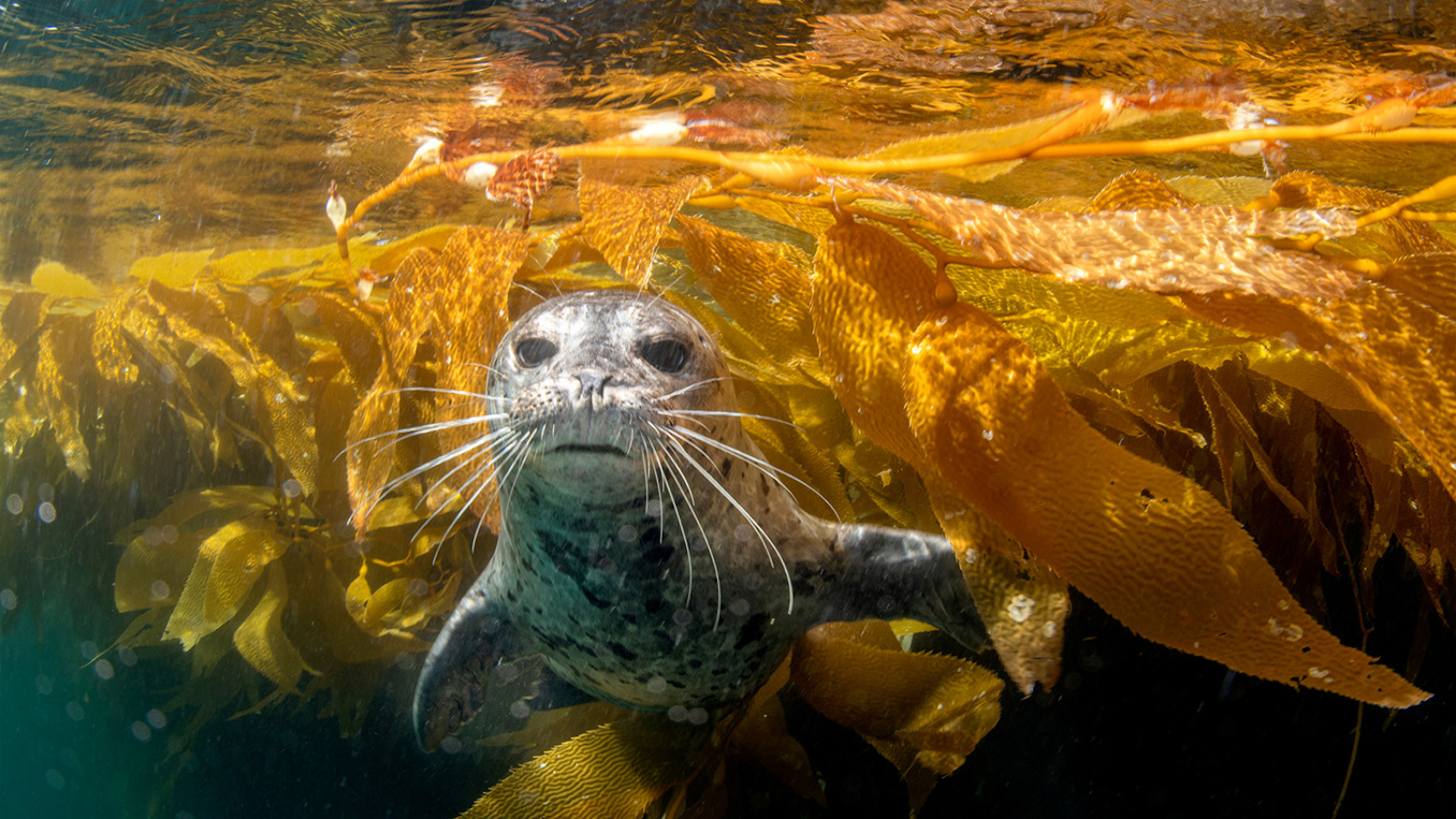
Tell Governor Newsom: California’s coastline needs more protection
Why we are calling on the state to better protect California's kelp forests, the "sequoias of the sea"
Send a Message
State Director, Environment California Research & Policy Center
Director, Protect Our Oceans Campaign, Environment America
Sometimes called the sequoias of the sea, California’s giant kelp forests tower above the seafloor. Some species can grow taller than a 10-story building.
Barely visible from the surface, these underwater forests teem with life. Juvenile fish hide in the kelp fronds from seals and sea lions hunting for their next meal. Sea otter mothers tangle their babies in kelp to keep them from drifting out to sea while the mother goes out to hunt. In fact, kelp cover is so important in protecting sea otters from shark bites, scientists think a lack of kelp cover is the top reason that sea otters have not returned in many places along the California coastline.
Kelp munching sea urchin populations have boomed in recent years. An extreme heat wave combined with an outbreak of sea star wasting disease caused sea stars, which love to eat urchin, to get wiped out. Meanwhile, other predatory fish are missing after decades of commercial fishing. This allowed the purple urchin to mow down acres of once vibrant kelp forests. And with ocean temperatures rising, these underwater forests are facing an uncertain future.
Recently released science from the state found that kelp forests in marine protected areas — areas that, like state parks on land, are protected from destructive activities — did better during the 2014-2016 heatwaves. And we know that some of our underwater forests have been resilient even in the face of all of these stressors.
We are working alongside our partners at Azul and with the support from a broad coalition of scientists, environmental organizations and members of the public. Following the 10 year review of the state’s marine refuge network, the state Fish and Game Commission called on groups like ours to submit proposals for how they can improve the state’s network of marine protected areas.

A sea otter enjoying their time in a kelp forestPhoto by Mike Baird | CC-BY-2.0
Keeping California’s remaining kelp forests healthy will not only help the fish, seals and sea otters that live there: it will also help our efforts to restore damaged kelp forests dotting the coastline. Globally, the most successful kelp restoration has happened where healthy forests can “seed” nearby areas.
Setting aside these resilient underwater forests will help build a better future for this critical part of California’s coastal ocean. And our proud legacy as a leader on ocean conservation, nationally and globally.
Laura directs Environment California’s work to tackle global warming, protect the ocean, and stand up for clean air, clean water and open spaces. Laura served on the Environment California board for two years before stepping into the state director role. Most recently, she directed the public health program for CALPIRG, another organization in The Public Interest Network, where she led campaigns to get lead out of school drinking water and toxic chemicals out of cosmetics. Prior to that, Laura ran Environment California citizen outreach offices across the state and, as the Environment California field director, she led campaigns to get California to go solar, ban single use plastic grocery bags, and go 100 percent renewable. Laura lives with her family in Richmond, California, where she enjoys hiking, yoga and baking.
Kelsey directs Environment America's national campaigns to protect our oceans. Kelsey lives in Boston, where she enjoys cooking, reading and exploring the city.
